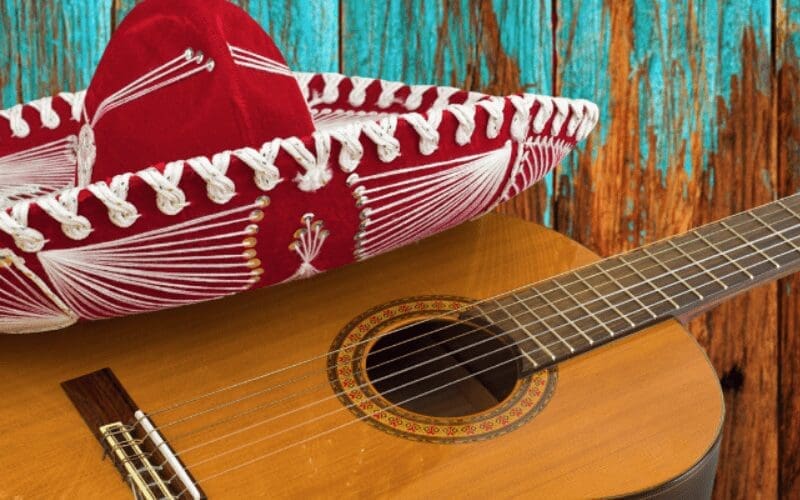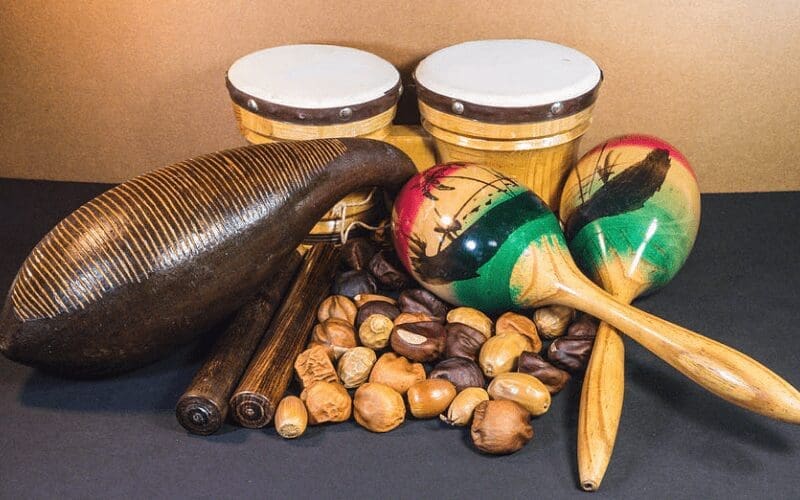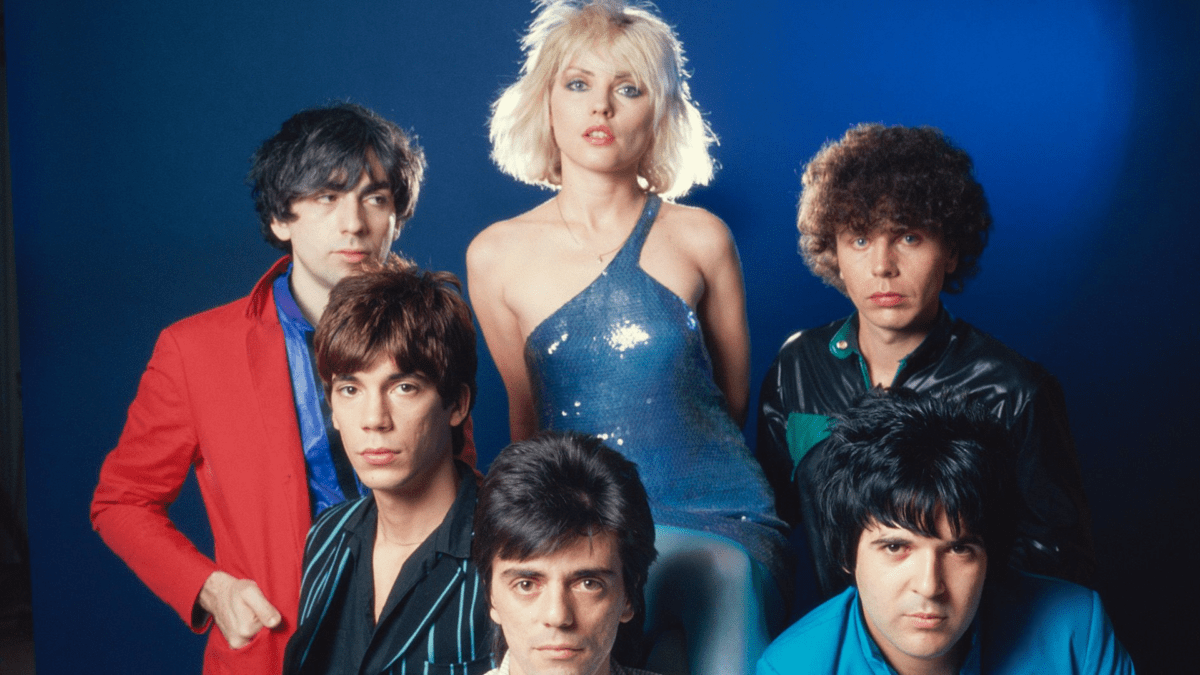At this point, being able to enter the world of Latino music carries a high level of social interest like it never did before. Latin music history has reached a point where almost no diametrically opposed music style can ignore its success. We even highlight how it has been positioned in history as a type of ethnic music. Reaching the upper class of each Central American country and today becoming a world legacy.

When we talk about Latin music, we talk about replacing what back in the day, was called Rock. As well as the messages directed from the lower classes towards real power. In addition to the already known romantic lyrics that will never cease to exist.
In this article, we are going to review the origins, instruments, and the current status of this set of rhythms that make the entire planet dance. Let’s get into it.
What Is Latin Music?

It is not easy at all to put together a few terms to define what Latin music is. However, we can define the concept as a deeply seductive set of rhythms. The percussive rhythms Latin music styles are based on reflect the enthusiasm with which they originated. Each person who listens to these rhythms will be able to easily recognize the attraction that it generates. We are talking about a psychological stimulus that is imprinted in our DNA.
Latino music today is mainly Spanish-speaking music that dominates the mainstream. Mostly in Reggaeton format towards the third decade of the 21st century. It is referred to as the constant mix of older styles such as Salsa, Funk, and others.
Over the last 30 years, we have been able to see how Latin music went from a mere pop ballad mode into a concentration of totally danceable rhythms. Latin music is intimately focused on rhythms. Being almost the fundamental engine when it comes to creating and producing it. This does not mean that it is simple, however. Since the number of instruments to be used to generate certain rhythmic measures requires significant training.
To conclude this explanation, we will go back to the 1987 remake of “La Bamba” by Los Lobos. An original rock song from the 1950s in Mexico, composed by Ritchie Valens. Today we take the pleasure of describing Latin music as an element that back in the day was Rock music. Why? Well, due to its geographical origins.
The History Of Latin Music

Two types of origins could be placed in this storyline. The first one has to do with the strict sense of the “Latino” concept. Plus the ethnic groups it comes from. While mixing up with the languages derived from the history of the Roman Empire – including Spanish and Portuguese mainly.
On the other hand, the second origin begins in the so-called Latin rhythms that were the result of African slavery in such Latin American countries. With people coming from West and South Africa in times of slave trafficking. At this point, 90% of the American continent (North, Center, and South) is today part of this history.
But what happened? Africans are mostly ritualistic. They perform music with a spiritual sense and as a message to their Gods. Every ritualistic ethnic group develops its own rhythms and meaning, in this case, melodic percussive. That is why we find so many Latin rhythms such as Cha-Cha and Bachata.
We could even include Tango that so much represents Argentina and Uruguay, as it has to do with another succession of immigrants. In this case from Eastern Europe, we are talking about the Polkas or Folk.
Main Latin Music Instruments

As mentioned above, the variety of musical styles considered to be of Latin origins is very wide. Therefore the list of instruments is infinite. For the purpose of this article, we are going to show the main percussive elements:
- Bongos
- Tambourine
- Keys
- Shekeres
- Bells
- Güiras
- Maracas
- Timpanis
- Blocks
- Ayotls
- Atabaques
In order to define some musical styles, it is necessary to set ourselves on the harmonic elements as well. Such as acoustic guitars for styles like Bachata, and Lambada. As well as trumpets, flutes, saxophones, pianos, and clarinets for styles like Salsa and Cumbia. Additionally, other instruments such as the violin, organ, keyboard, bass, cuatro, and electric guitar.
Finally, we cannot leave out the electronic or digital elements that make up current Latin pop music like Reggaeton. These are the synthesizers and drum machines.
In the case of these styles mentioned, we can add Merengue House that was a complete blast towards the mid-90s. With the particularity of playing with real instruments on top of the beats created with drum machines and then mixed by a computer. This has allowed more musical styles to join the hybrid trend of working with both created or synthesized sounds. Recording real instruments and also being able to sample them.
For those who still wonder what are the different musical instruments of Latin American music, we can say that today the computer is another complete instrument. Since it is necessary for the placement of recordings at the moment of the mixing or mastering. Not to mention what it has to do with social media in terms of marketing. It is a fundamental and central weapon.
5 Facts About Latin American Music

It is of importance to highlight some elements that make Latin Music rise above any challenge over the years, as music keeps evolving.
Here’s 5 super interesting facts about Latin American music that you may not have known.
1. No One Can Escape The Rhythm
The first fact is that no one can escape the catchy rhythms. Even the most boring person may not be able to stay still while a percussive instrument is being played.
This happens according to evolutionary psychology studies because the brain remembers rhythm patterns heard during childhood.
2. Latin Music Owns The Streaming Era
Our second fact is that Latin Music owns the streaming era. With billions in the play-count, surpassing Hip-hop, Trap, and even American country and Pop music that used to own the charts for decades. According to YouTube, the music video with the biggest numbers is still “Despacito” from 2017. It has over 7.2 billion plays!
If you look over the YouTube Music Charts on Latin American countries, all you are going to find is Reggaeton, Cumbia, and trap music sung in Spanish. If you now go to the same charts but from the United States, Germany, or Italy, the mix contains tons of Reggaeton artists. Most of them collaborated with American acts like Shakira or Billie Eilish.
3. Then Local, Now Global
Third fact – then local and now global. Latin American music was thought to be a local trend in every country.
But as decades went by, the interest abroad could not help but grow at the highest rates. In the mid-70s, Spanish-speaking rock music started getting attention because of the ability to merge with other music styles.
The same began to happen in recent years with Reggaeton and EDM music producers. The popularity of Latin American music grew like never before and it seems to continue expanding to more languages.
4. Latin Music Is Diverse
Our fourth fact is that it is well combined with almost any other genre.
We are not implying that the origins of Latin American music are going to disappear. On the opposite, they tend to magnify even more by taking over the mainstream position.
Other genres are the ones that need that Latin touch.
5. Collaborations Are Like A Formula
Our fifth fact is that collaborations are like a formula. People love listening to what their favourite artist can do with a guest act in the case of Reggaeton.
They can be as many as 20 singers or rappers in the same song chanting different parts. Every one of them with their own peculiarity on the voice.
Collaborations between English-speaking and Spanish-speaking artists may sound odd at first, but, you start to get used to it.
Latin American Music Classics
Now that you are familiar with Latin music history and when was Latin music created, let’s go over some Latin American music classics.
“Guantanamera” – Joseíto Fernández
A very curious song, telling the story of a Cuban guy who sings to a girl who he refers to as “guajira guantanamera” (from Guantánamo).
The actual origin is uncertain, but we were all taught that the famous writer José Martí influenced the ultimate version of the song at least on the lyrics.
It was popularized by several artists the likes of Celia Cruz, Wyclef Jean, Compay Segundo, The Sandpipers, and more.
“Bésame Mucho” – Luis Miguel
From Mexico, to the world. This is one of the most recognizable songs in Spanish.
Pianist and composer Consuelito Velázquez wrote this song in the 1930s and it even has an English version recorded by The Beatles.
In recent times, Luis Miguel, Il Divo, and Thalía with Michael Bublé performed very chic adaptations of the song.
“Vivir Lo Nuestro” – Marc Anthony
Latin Music in the 80s and 90s had a great transformation before the first peak in the mid-2000s.
This is an anthem composed by the popular Panamanian artist Basilio. Worldwide known when recorded and popularized in Salsa style by India and Marc Anthony. A true love song!
“Conga” – Gloria Estefan
Published in 1985, the Miami Sound Machine band led by Gloria Estefan took the world by storm with this astonishing song. It sat on the Top 10 of the Billboard Hot 100 for 46 straight weeks.
It was considered one of the most influential Latin Dance songs from then on. Giving the opportunity to her husband Emilio Estefan to produce tons of artists with the Miami Sound Machine.
“Libertango” – Astor Piazzola
A masterful piece from Astor Piazzola, perhaps the most influential Tango composer of all time, right after Carlos Gardel.
This is not just a song but a state-of-the-art recording. 36 minutes of complete ecstasy that back in the 70s changed the whole game.
It is known for having the style re-named to “Nuevo Tango” (new tango) because of its modern jazz influence. Giving the credit of having appeared on over 500 separate recordings (i.e. Grace Jones on “I’ve Seen That Face Before (Libertango)”.
“La Cucaracha” – James Last
Still taught to children in all of the Latin American countries, it is a very funny-sounding song from the Mexican corrido rhythm.
Although it was originally a politically-based type of song (like the now mainstream-ish “Bella Ciao” from II World War).
But who collaborated in making this song famous? Well, from The Gipsy Kings to Louis Armstrong, there is a full army.
“El Día Que Me Quieras” – Carlos Gardel
Anyone who enjoys listening to tango must remember this all-time favorite by Carlos Gardel.
Popularized again in the 1990s by Luis Miguel, it is substantial in crescendo oeuvre originally recorded in New York under the label imprint RCA Victor.
“Oye Cómo Va” – Tito Puente
This song has one of the elements of modern Latin Music which is the experiment of fussion.
Way before Mambo and Salsa became “the Salsa” and “the Mambo” in the 1960s, it had to start by mixing the Cuban native elements with the American Jazz sounds. Just like Tito Puente did on this one.
Carlos Santana led it to a whole new level in the 1970s. Holding his remake of “Oye Como Va” for 6 weeks on the Billboard Hot 100.
“Garota de Ipanema” – Antônio Carlos Jobim
A song originally existentialist in the lyrics that was suddenly re-written and transformed into some kind of “Guantanamera”. A guy who tells a story about a girl, but sweeter.
The song was created and intended for a musical then adapted for the LP “Getz/Gilberto” in 1963. It was covered by dozens of well-known artists such as Frank Sinatra, Ella Fitzgerald, The Supremes, Cher, Nat King Cole among others.
“¿Y Cómo es Él?” – José Luis Perales
As we want to cover every style of music that helped grow the Latin music industry, we could not have José Luis Perales out of these memories.
This was a song made for Julio Iglesias to perform, but it finally got recorded by Perales in 1982.
It was then covered by Raphael and Marc Anthony. It is considered as just a ballad or Latin pop.
Our Final Thoughts

If we try to define Latin music as something homogeneous, it is impossible. Since each country has developed its own styles of both dance steps and music formulas. As well as with clearly differentiated influences. Although we can well place common elements such as those mentioned at the beginning of the article (the percussive ones).
It is clear to us that the concept of Latin Music does not have a place to stand still. This is because it continues to advance as it intermingles with mainstream pop music, electronic dance music, and also within the same styles of Latin music. Not to forget 15 years ago when Salsaton emerged, which is nothing more than salsa with a Reggaeton beat, something that did not go very far.
The list of all-time great songs shown above is a great example of the amplitude that holds on to the concept of what is Latin Music after all. It was, and will always be influenced by foreign styles such as jazz and rock in order to reconvert them to new ways and techniques of composition and production.
Latin American music is now on the edge of glory and we may assume that the next 10 years are to be clearly led by Latin musicians and singers.
Do you enjoy Latin music? Leave your favourite songs in the comment section below, we would love to hear from you! Also, don’t forget to share this article across your socials and tag us @musicgateway!










